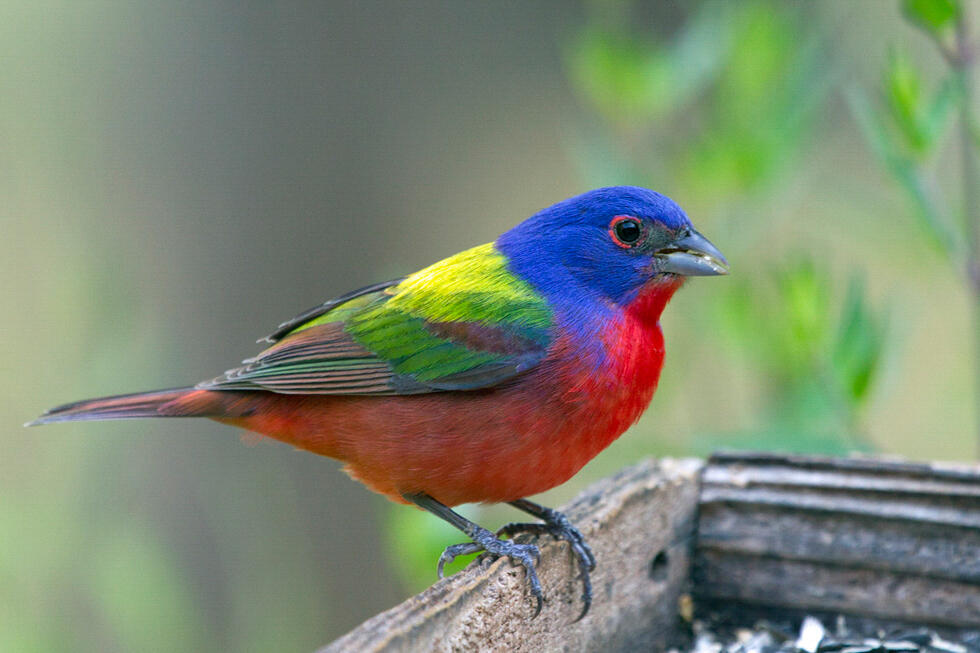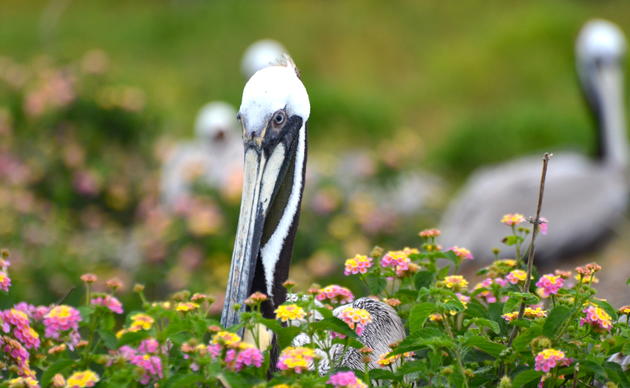Step outside and look around. Doesn’t everything seem just a little louder and brighter with Spring fast approaching? We’re celebrating the season when many migrant songbirds make their way back to North America having spent their winter in warm and sunny Central and South America. Texas’s vast geographic area and diversity of habitats provides critical resources including food, water, and shelter for birds along their journey.
I am lucky to live in San Antonio, Texas, which is located directly in the middle of the Central Flyway, the migratory “highway” birds follow each year. As such, I get to enjoy a free seasonal show full of color and song as birds bustle about to gather food for the next leg of their journey. Many birds are at their brightest and loudest trying to attract and impress their mates.
Spring Migration 2023 beings March 1st and continues through June 15th. During this time, many birds make an impressive non-stop journey across the Gulf of Mexico. But their migration patterns are about as diverse as bird species in Texas. Studies have shown that some birds, like hummingbirds and hawks, use the sun and visual landmarks, such as rivers and mountains to navigate. Songbirds fly in the cover of the night, using the stars and magnetic fields as their compass. You can help them have a safe flight by turning off your lights at night! Their journey is arduous, and only about half of migrating birds complete their migration journey. Turning off your lights to preserve dark skies, adding bird deterrent window film, and planting native plants are some small actions we can take to keep our feathered friends flying high.
Fortunately, there are many individuals passionate about protecting birds and the places they live. Many natural areas, parks, and sanctuaries in South Central Texas put these actions into practice, where we can witness a small piece of the amazing cycle of migration. Nearly every morning in the spring last year, a male Painted Bunting graced us with his song and presence in our native plant gardens and bird bath at Mitchell Lake Audubon Center. Many people came to visit, hoping to catch a glimpse of these colorful birds, and very few left disappointed.
The stunning and elusive Golden-cheeked Warbler is the only bird species whose entire population nests solely in the Lone Star State. Although they haven’t been seen at Mitchell Lake Audubon Center for a while, you can try and catch a glimpse of these endangered birds at Balcones Canyons National Wildlife Refuge or Friedrich Wilderness Park. Visitors to these local parks and green spaces early in the morning, you are likely to encounter many spring migrants such as warblers, tanagers, vireos, and buntings. It’s a colorful fiesta of bustling activity and beautiful song that is well worth venturing out to see.
How you can help, right now
Join Audubon Texas Today
Becoming a member supports our local work protecting birds and the places they need.
Consider a Legacy Gift for Texas
Planned gifts and bequests allow you to provide a lasting form of support to Audubon Texas.
Subscribe to Our Newsletter
Subscribe to our newsletter for updates about Audubon Texas's conservation work, and news about our activities and local events.





